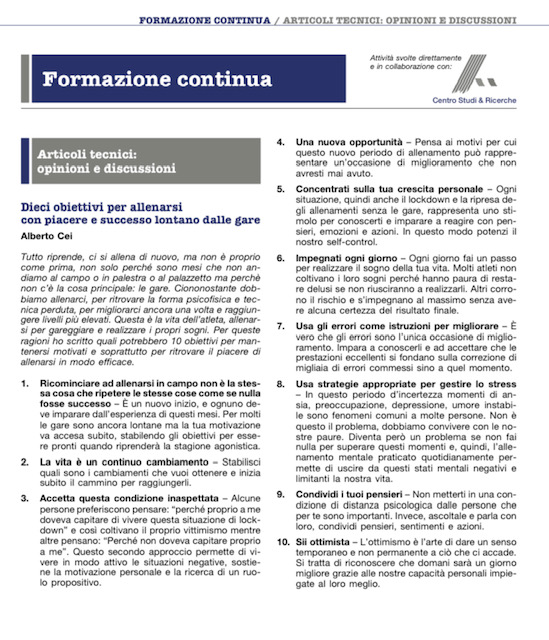Improvement is an ongoing process that is developed on a daily basis and requires constant commitment on the part of the athlete and those who follow this activity of the athlete. The goal is to increase competitive performance and physical, psychological and technical skills. Achieving and subsequently maintaining competitive effectiveness requires a continuous focus on improvement in all areas involved in determining final performance.
For an athlete, the quality of the sporting environment in which he or she is placed is very important, and the characteristic attitudes of a positive environment are as follows:
- Prevention and non-reaction – one must act to anticipate potential causes of problems, thinking in terms of: “What if…” for the purpose of formulating responses to the most critical situations that might arise
- Improvement activity must be relentless and modulated in terms of difficult but achievable goals
- The athlete and coach must collaborate in choosing the athlete’s own goals for improvement
- The athlete must establish clear, goal-based relationships with each expert involved in his or her preparation
- The athlete and the sports organization of which he or she is a part must view mistakes as the most important opportunity for improvement and not as something to be hidden
- The athlete and his or her sports organization can identify long-term goals that are seemingly even too ambitious, but they must establish goals and short- and medium-term goals that are specific and perceived as attainable
- Interpersonal communication must be stimulated and fostered
- Of each cycle of training, the athlete must perceive the theoretical added value (that which determines why it is worthwhile to engage in an activity) and that which is actually provided to the acquisition of skills
- Use of the approach based not only on the identification of problems but also on the simultaneous identification of solutions. To pose problems and not solutions only serves to sink personal esteem, in any situation one must always focus on ways out
- Problem solving is a system of methods that when used systematically during the improvement journey, enable one to meet the goals one has set through effective use of the resources one has. Problem solving is structured as follows:
- identification of the problem and its causes,
- choice of the solution to be implemented,
- agreement between the parties regarding the proposed solution,
- implementation of the solution,
- verification of the results obtained,
- inclusion of the solution in the training program





